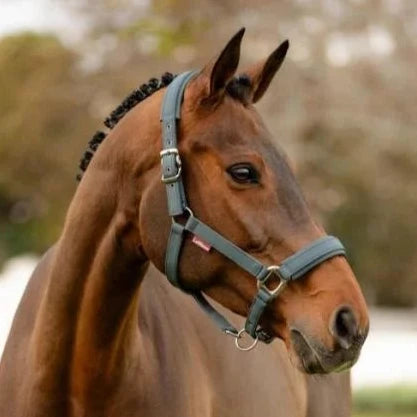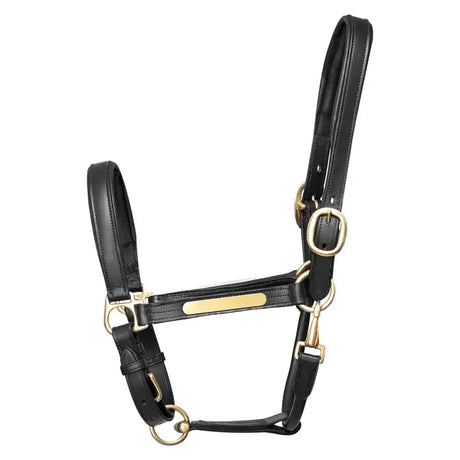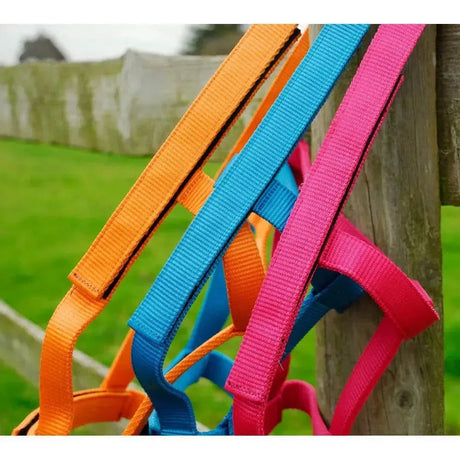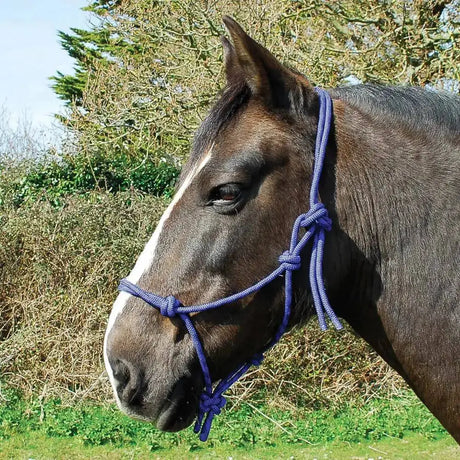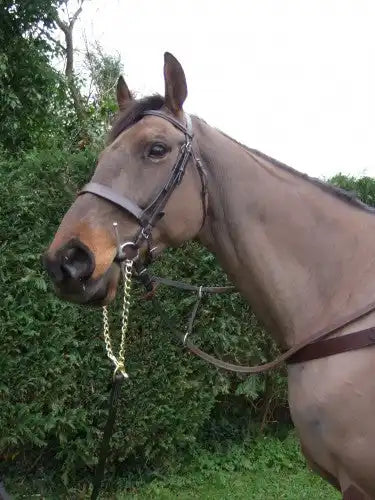Lead Ropes
Lead ropes are essential tools for handling and leading horses, used in combination with a headcollar (halter) or bridle. They allow handlers to guide or tie up a horse safely and effectively. Lead ropes come in various materials, lengths, and designs, each suited to different tasks, from everyday leading and tying to training or showing.
Key Features of Lead Ropes
-
Material:
-
Nylon: Durable, lightweight, and often available in bright colors or patterns. Resistant to weather and easy to clean.
-
Cotton: Soft, comfortable to handle, and provides a good grip. Cotton lead ropes are flexible and less likely to cause rope burn.
-
Leather: Stylish and durable, leather lead ropes are often used for showing or formal events.
-
Polypropylene: Similar to nylon, polypropylene ropes are strong, weather-resistant, and come in a variety of colors and patterns.
-
Rope: Natural or synthetic fibers can be woven into lead ropes, often used in natural horsemanship for better feel and communication.
-
Length:
- Lead ropes are usually 6-9 feet (1.8-2.7 meters) long. Shorter ropes (around 6 feet) are ideal for general handling, while longer ones (up to 12 feet) are used for groundwork, training, or lunging.
-
End Fittings:
-
Snap Clip: The most common fitting, allowing quick attachment to the horse’s headcollar. Made from brass, nickel, or stainless steel for durability.
-
Trigger Clip: Easy to open and close, often more secure and durable than a regular snap clip.
-
Bull Snap: Heavier and stronger than a standard snap clip, ideal for large or strong horses that may pull.
-
Quick-Release Clip: Designed for safety, these clips allow the handler to quickly detach the lead rope if necessary.
-
Design Features:
-
Swivel Clip: Prevents the rope from twisting when attached to the headcollar, making it easier to handle and reducing the risk of tangling.
-
Loop End: Some lead ropes come with a loop at one end rather than a clip, designed for tying directly around the horse’s halter.
-
Knot or Handle End: Many lead ropes feature a knot or leather popper at the end, providing a better grip for the handler.
Types of Lead Ropes
-
Standard Nylon or Cotton Lead Ropes:
-
Material: Made from durable nylon or soft cotton, with a clip on one end and a knot or handle on the other.
-
Use: Ideal for everyday handling, tying, and leading horses.
-
Benefits: Affordable, available in various colors, and strong enough for regular use.
-
Training or Long Lead Ropes:
-
Material: Often made from soft cotton or a durable synthetic blend, these ropes are longer (usually 12 to 14 feet).
-
Use: Useful for groundwork, lunging, or natural horsemanship techniques where extra length allows more space between the handler and horse.
-
Benefits: Allows for greater flexibility and control during training exercises.
-
Leather Lead Ropes:
-
Material: Made from high-quality leather, often with a brass or stainless steel snap or chain at the end.
-
Use: Primarily used for showing, in-hand presentations, or formal occasions where appearance is important.
-
Benefits: Stylish, durable, and looks professional when paired with a leather headcollar.
-
Lead Ropes with Chain:
-
Material: Typically nylon or leather with a metal chain attached to the end.
-
Use: Provides additional control for leading strong or excitable horses, often used in shows, handling stallions, or during transport.
-
Benefits: The chain applies gentle pressure when necessary, helping to guide or control the horse without excessive force.
-
Reflective or Hi-Vis Lead Ropes:
-
Material: Nylon or polyester with reflective strands woven into the rope.
-
Use: Designed for leading horses in low-light conditions, such as early morning or evening.
-
Benefits: Increases visibility for safety during dark conditions or road hacking.
Popular Lead Rope Features
-
Comfort Grip:
- Cotton or padded lead ropes offer comfort during long handling sessions, reducing the risk of rope burn or discomfort in the handler’s hands.
-
Durability:
- Strong clips, sturdy stitching, and quality materials ensure that lead ropes last through daily wear and tear, even with regular exposure to weather.
-
Style:
- Lead ropes are available in a variety of colors and patterns, allowing for a personalized look that matches a horse’s tack or stable colors. Leather ropes offer a polished, professional appearance for special occasions.
-
Safety:
- Quick-release clips and breakaway designs ensure the handler can free the horse quickly if necessary. These are ideal for unpredictable situations, like turnout or transport.
Choosing the Right Lead Rope
-
Material:
-
Nylon is great for durability and everyday use, while cotton is softer and more comfortable for the handler.
-
Leather ropes are ideal for showing or formal use.
-
Purpose:
- For everyday handling or leading, a standard 6-8 foot nylon or cotton lead rope is ideal.
- For training or groundwork, consider a longer (12-14 foot) rope to give you more room to move and guide your horse.
- For strong horses or situations where more control is needed (e.g., stallions or show handling), a chain-end lead rope provides better control.
-
Clip Type:
-
Snap clips are easy to use and suitable for most situations.
-
Quick-release clips add an extra layer of safety, allowing for quick detachment in emergencies.
-
Bull snaps are ideal for strong horses, as they are more secure and durable than standard clips.
-
Length:
- Shorter ropes (6-8 feet) are good for basic leading, tying, or securing your horse.
- Longer ropes (12-14 feet) are useful for groundwork, training, or when you need extra space between you and the horse.
Popular Brands of Lead Ropes
-
LeMieux:
- Known for high-quality equestrian gear, LeMieux offers a range of durable and stylish lead ropes, often made from soft cotton or nylon with matching headcollars.
-
Shires:
- Shires produces affordable and durable lead ropes, available in various materials, including nylon and cotton. Their range includes everyday ropes as well as chain-end options for more control.
-
WeatherBeeta:
- WeatherBeeta provides strong, well-made lead ropes, often designed with matching headcollars. Their ropes come in a variety of colors and materials, suitable for everyday use.
-
Hy Equestrian:
- Hy Equestrian offers affordable, colorful lead ropes that are perfect for daily handling. They also provide training ropes and chain-end options for extra control.
-
Collegiate:
- Collegiate specializes in high-quality leather lead ropes, ideal for showing and formal presentations. Their leather ropes are often paired with brass or stainless steel fittings for a polished look.
Conclusion
Lead ropes are a fundamental tool for horse handling, with options to suit every need from basic daily use to more specialized purposes like training or showing. With a variety of materials, designs, and features, choosing the right lead rope depends on your horse’s needs, the type of handling you’ll be doing, and your personal preferences for comfort and style.


